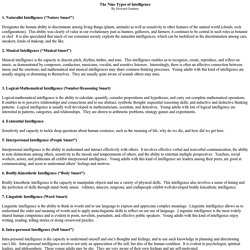

Pitfall. Something queer happened to Seattle in 1954: Citizens began noticing pits in their windshields.

These were attributed first to vandals with BB guns, then to the eggs of sand fleas, and then variously to cosmic rays, a change in the planet’s magnetic field, and a new Navy radio transmitter. As the rumors mounted, University of Washington glass expert Harley Bovee heard even stranger reports: “glass breaking on store counter while customer reported simultaneous itching; man on nearby island who reported seeing small glow near Big Dipper; and man who reported seeing small spheres emerging from auto tailpipes.”
In the week of April 14, police received reports of 4,294 damaged windshields — but then they stopped abruptly. The culprit, it now appears, was nothing at all. “The hard fact,” said glass expert James Ashley, “is that this seems to be wholly psychological. Seeing Life Through Introvert Eyes. When you see a couple sitting in a restaurant over Sunday breakfast, each reading the newspaper, do you think: a) OH! How tragic! This couple is ignoring each other! The Dark Side of Self-Control. Cultural Studies & Analysis. Procrastination. Video. Rosenhan experiment. Experiment to determine the validity of psychiatric diagnosis Rosenhan's study was done in eight parts.

The first part involved the use of healthy associates or "pseudopatients" (three women and five men, including Rosenhan himself) who briefly feigned auditory hallucinations in an attempt to gain admission to 12 psychiatric hospitals in five states in the United States. All were admitted and diagnosed with psychiatric disorders. After admission, the pseudopatients acted normally and told staff that they felt fine and had no longer experienced any additional hallucinations. All were forced to admit to having a mental illness and had to agree to take antipsychotic drugs as a condition of their release.
The second part of his study involved an offended hospital administration challenging Rosenhan to send pseudopatients to its facility, whom its staff would then detect. While listening to a lecture by R. Pseudopatient experiment[edit] Non-existent impostor experiment[edit] See also[edit] How Psychopaths Choose Their Victims. Recently my journalistic career brought me in contact with a man who, when I first met him, seemed to be the very embodiment of a charming and well-heeled gentleman.

He is a natural raconteur, good-looking, athletic, intellectually curious, financially successful, and wittily self-deprecating. What few people know about him is that he has left behind a trail of emotional destruction, having spent decades abusing vulnerable individuals for his own twisted purposes. Love styles. Love styles are modi operandi of how people love, originally developed by John Lee (1973,[1] 1988[2]).

He identified six basic love styles—also known as "colours" of love—that people use in their interpersonal relationships: Clyde Hendrick and Susan Hendrick of Texas Tech University expanded on this theory in the mid-1980s with their extensive research on what they called "love styles". They have found that men tend to be more ludic, whereas women tend to be storgic and pragmatic. Mania is often the first love style teenagers display.
Relationships based on similar love styles were found to last longer. Styles[edit] Eros[edit] Top 10 Most Famous Thought Experiments. Thought experiments are mental concepts or hypotheses, often resembling riddles, which are used by philosophers and scientists as simple ways of illuminating what are usually very dense ideas.

Most often, they’re used in more abstract fields like philosophy and theoretical physics, where physical experiments aren’t possible. They serve as some hearty food for thought, but given their complex subject matter, it’s not unusual for even the thought experiment itself to be nearly incomprehensible. With this in mind, here are ten of the most famous thought experiments, along with explanations of the philosophical, scientific, and ethical ideas they work to explain: 10. The Trolley Problem One of the most well known thought experiments in the field of ethics is the “Trolley Problem,” which goes something like this: a madman has tied five innocent people to a trolley track.
What it Means: 9. 8. How the Brain Stops Time. One of the strangest side-effects of intense fear is time dilation, the apparent slowing-down of time. It's a common trope in movies and TV shows, like the memorable scene from The Matrix in which time slows down so dramatically that bullets fired at the hero seem to move at a walking pace. In real life, our perceptions aren't keyed up quite that dramatically, but survivors of life-and-death situations often report that things seem to take longer to happen, objects fall more slowly, and they're capable of complex thoughts in what would normally be the blink of an eye.
The Nine Types of Intelligence. By Howard Gardner 1.

Naturalist Intelligence (“Nature Smart”) Designates the human ability to discriminate among living things (plants, animals) as well as sensitivity to other features of the natural world (clouds, rock configurations). Introverts are Not Retarded or Anti-Social - Understanding The Introverted Child. Summary: The world is full of extroverts and reflects their extroverted ways.

This is hard on introverts. The Dos and Don’ts of working with an introverted child. My daughter making a pet store in her room.